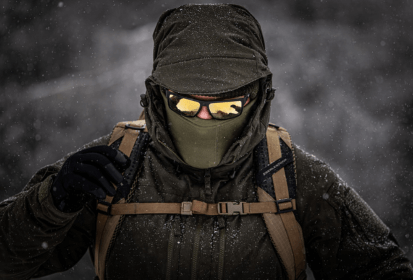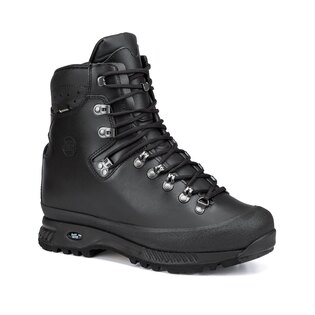Hanwag shoes: European production, world popularity
Hanwag, a German outdoor shoe brand, has been providing footwear for the most demanding adventurers and lovers of mountains and extreme conditions for over 100 years. As a global leader in the outdoor market, it is living proof that tradition with innovation and craftsmanship with modern technology can go hand in hand. The Hanwag brand is based on quality without compromise and offers you footwear that will last. Step into an adventure in the new year in Hanwag shoes!
The Hanwag brand has a very long tradition. Its story began more than 100 years ago and is still synonymous with top-notch outdoor shoes for mountains and treks. Thanks to high-quality craftsmanship, you can rely on them being refined down to the finest detail. All this in combination with the latest technical knowledge, continuous innovation and in cooperation with professional alpinists, trekkers and mountain guides.
This is the only way to create shoes that can easily conquer even the most difficult terrain. Hanwag represents certainty and fair play in the dynamically changing outdoor industry. Its philosophy always revolves around one fundamental question: what makes a shoe the perfect shoe? And the answer is that the perfect shoe is never finished.
A brand born in the foothills of the Alps
This question was asked by the founders of the brand, Hans Wagner and his nephew Josef Wagner, from the very beginning. It helped them grow and, over the course of several decades, slowly but surely develop from an honest family workshop into one of the world's top brands. It is also no coincidence that Hanwag is a sister brand and healthy competitor to the equally well-known Lowa brand, about history and present of which we wrote exactly a month ago. The founder of Lowa, Lorenz Wanger, was Hans Wagner's brother.
And like Lowa, the Hanwag brand did not focus only on shoes designed for alpine tourism. In the 1960s, it produced ski boots that were exported in large quantities to the United States. As for climbing boots, the "Hanwags" were ahead of their time and stormed the market even before the climbing boom began. A special model of boots for parachutists helped to mitigate the hard impact during landing.
But the main goal remained the same: to produce durable and comfortable shoes with a long lifespan that, with proper care, can last for decades. Ones that can handle the arctic conditions of the high mountains, Central European forest and rocky roads and off-roads, and expeditions to tropical jungles.

Hanwag shoes are 100% made in Europe.
100% European production
One of Hanwag's core values is sustainability. This would be difficult to achieve if production were moved to the other side of the world. All Hanwag shoes – from the high-quality Vibram sole to the timeless full-grain leather to the laces - are 100% made in Europe. In addition to the main production plant in Vierkirchen, Bavaria, Hanwag also owns a production plant in Hungary and works with partners in Croatia, Romania and other European countries.
All the materials used to make the shoes also come from Europe – with perhaps one exception, which is the yak leather from Mongolia, which is also processed and refined in Germany. But what does the term "made in Europe" really mean?
"Made in Europe" is not the same as "Made in Europe"
A trekking boot has a very complex construction and consists of dozens to hundreds of different parts. Individual parts can come from different countries. In addition, the final product can be assembled in a completely different country. So which country should be designated as the country of origin?
According to the EU Customs Code, the origin of a product can be assessed according to two main aspects:
- According to the country where the last significant processing or working took place
- and at the same time the value of the product increased by at least 45%. This applies to both the materials and the work done on the product.
Theoretically, a manufacturer could have the leather uppers of the boots sewn in Asia, add soles to them in Germany and label the final product as "Made in Germany". However, Hanwag guarantees with its promise that the shoes of this brand are 100% made in European countries.
In addition, Hanwag clearly states on all its products the specific country in which the shoes were made, e.g. "Made in Croatia", although there is no such requirement in the European Union, unlike, for example, the USA.
Local production – a benefit for the planet and the customer
So why does Hanwag manufacture its shoes exclusively in Europe, when it could be done cheaper elsewhere? The answer goes back to the beginning – because the goal is to create shoes that will serve their wearer for decades. Emphasis on the quality of each production step, trained personnel and planning efficiency are all among the main advantages of European production.
And we must not forget ecology as one of the key topics of today. Local production means a significant reduction in emissions and control over compliance with all safety standards. "Hanwag shoes are designed to cover distances by walking, not by sailing during transport," adds Stefan Jerg, Head of Production and Purchasing. How characteristic of Hanwag. Since 1921 to the present day…
Readers are further interested

















































































































































